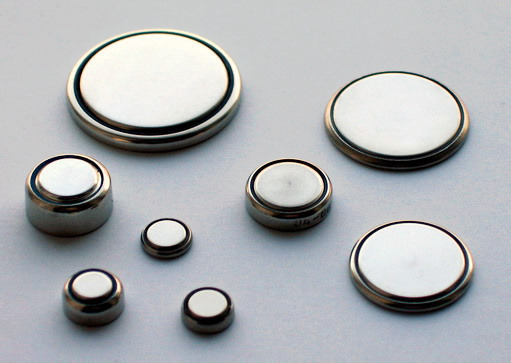Différences entre versions de « Piles-Lithium-et-bouton »
(Page créée avec « {{PILES-NAV}} {{ADFImage|Piles-Lithium-et-bouton.jpg|640px}} Most of the lithium batteries you'll see are in coin/button cell form. Coin cells are small discs ([http://comm... ») |
|||
| Ligne 3 : | Ligne 3 : | ||
{{ADFImage|Piles-Lithium-et-bouton.jpg|640px}} | {{ADFImage|Piles-Lithium-et-bouton.jpg|640px}} | ||
| − | + | {{bloc-etroit|text=La plupart des piles Lithium que vous rencontrerez aurons la forme d'une pièce ou d'un bouton. Les piles boutons son de petits disques ([http://commons.wikimedia.org/wiki/File:Coin-cells.jpg voir ci-dessus]), elles utilisent des cellules Lithium (3V) mais vous pourriez trouver des piles Alkaline, zinc air et manganèse (1.5V). | |
| − | + | Ces piles sont très petites et très légères, génial pour de petits périphériques à basse consommation. Elles sont aussi très sure (sécurisée) et disposent d'une très longue durée de vie pour un prix vraiment intéressant. However, they are not rechargeable and have high internal resistance (which is what makes them fairly safe if there's only one or two in use) so they can't provide a lot of continuous current: 0.005C is about as high as you can go before the capacity is seriously degraded. However, they can provide higher current as long as its 'pulsed' (usually about 10% rate). | |
Version du 15 septembre 2014 à 12:31

Crédit: AdaFruit Industries www.adafruit.com
{{bloc-etroit|text=La plupart des piles Lithium que vous rencontrerez aurons la forme d'une pièce ou d'un bouton. Les piles boutons son de petits disques (voir ci-dessus), elles utilisent des cellules Lithium (3V) mais vous pourriez trouver des piles Alkaline, zinc air et manganèse (1.5V).
Ces piles sont très petites et très légères, génial pour de petits périphériques à basse consommation. Elles sont aussi très sure (sécurisée) et disposent d'une très longue durée de vie pour un prix vraiment intéressant. However, they are not rechargeable and have high internal resistance (which is what makes them fairly safe if there's only one or two in use) so they can't provide a lot of continuous current: 0.005C is about as high as you can go before the capacity is seriously degraded. However, they can provide higher current as long as its 'pulsed' (usually about 10% rate).
One of the most popular coin cells in use right now is the CR2032 which is 20mm diameter x 3.2mm thick, provides 220mAh at 3V. Lithium coin cells can get as large as the CR2477 (24mm x 8mm) with a capacity of 1000mAh for $3.50
The only other lithium cell you'll see around is the CR123, which is a 3V cell thats a bit thicker than a AA battery and a bit shorter too.
Pour: Light, high-density, small, inexpensive, high cell voltage, easy to stack for higher voltages, long shelf-life.
Contre: Non-reusable, low current draw capability, needs a special holder.
Prices: CR2032 are around $0.35 (220mAh) CR123's are $1.50 (1300Ah).
Power density: 270 Wh/kg
Tutoriel All About Batteries créé par Lady Ada pour AdaFruit Industries.
Tutoriel traduit par Meurisse D. pour MCHobby.be
Traduit avec l'autorisation d'AdaFruit Industries - Translated with the permission from Adafruit Industries - www.adafruit.com
Toute référence, mention ou extrait de cette traduction doit être explicitement accompagné du texte suivant : « Traduction par MCHobby (www.MCHobby.be) - Vente de kit et composants » avec un lien vers la source (donc cette page) et ce quelque soit le média utilisé.
L'utilisation commercial de la traduction (texte) et/ou réalisation, même partielle, pourrait être soumis à redevance. Dans tous les cas de figures, vous devez également obtenir l'accord du(des) détenteur initial des droits. Celui de MC Hobby s'arrêtant au travail de traduction proprement dit.